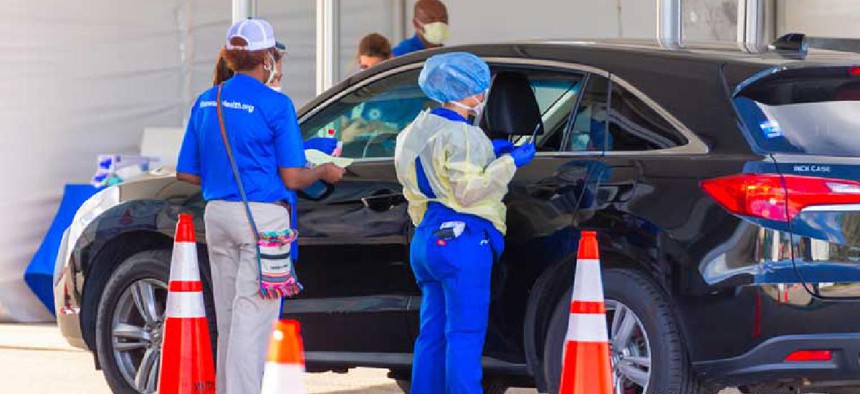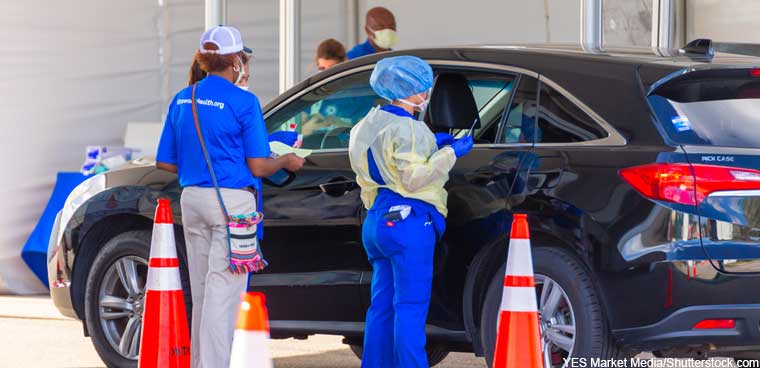National Labs turn to 3D printing for medical supplies

National labs look to 3D printing to ease COVID medical supply chain squeeze, but reports shows need remains stark.

Although almost all of the nation's national labs have begun to develop 3D printed medical equipment prototypes to help ease strained medical supply chain needs, new emergency management agency reports show the effort is a small drop in a very deep bucket of need.
Fifteen of the Energy Department's 17 national laboratories are consulting with public and private stakeholders to use "additive manufacturing" methods to help make more face masks, face shields and ventilators, Department of Energy Secretary Paul Dabbar said in a March 30 blog post on the agency's website. Additive manufacturing is another term for 3D printing. A Department of Energy spokesperson told FCW the labs' 3D prototype printing effort could help industry shorten development times for companies to make acceptable products from months to days.
Other agencies are also turning to 3D printing to speed medical supplies. On March 26, the National Institutes of Health's National Institute of Allergy and Infectious Diseases, the Food and Drug Administration and the Veterans Health Administration Innovation Ecosystem issued a memorandum of understanding to set a framework to use 3D printing for medical supplies.
The efforts are taking place in the shadows of an unrelenting shortfall of the equipment nationally, according to documents released April 2 by Rep. Carolyn Maloney, (D-N.Y.) chairwoman of the House Committee on Oversight and Reform.
Documents from Federal Emergency Management Agency (FEMA)'s Region III, which encompasses Delaware, the District of Columbia, Maryland, Pennsylvania, Virginia, and West Virginia, shows as of March 30, requests for critical gear remain expansively unmet in Region III -- one of FEMA's 10 regions.
The Committee's statement said the five states in Region III received only a fraction of what they had requested from FEMA.
For instance, it said only 445,000 N95 masks of a needed 5.2 million were received by the region's states. Only 991,000 pairs of gloves from a needed 194 million pairs were received. The lists and their shortfalls are long and deep for every state.
"The new documents we are releasing today confirm the urgent warnings we have been hearing from our nation's governors and health care professionals for weeks—they do not have enough personal protective equipment and medical supplies, and the administration has provided only a tiny fraction of what they desperately need," said Maloney in the statement.
"You've got to get ahead of it. You can't wait for people to start asking for things," Frank Kendall, undersecretary of defense for acquisition technology and logistics at the Defense Department from 2012 to 2017 told FCW in a March 31 interview.
Kendall, a veteran of the Ebola crisis and Superstorm Sandy said it's not too late for the Trump administration to get its footing.
"We don't have months or years to get things built," he said about the current response. The beefed up response, he said "is late, but not too late."
One thing that would help is smart use of the Defense Production Act to ramp up production and direct industrial response among producers large and small of needed items, from ventilators to personal protective equipment.
The point agency for the COVID-19 response is a tough choice, according to Kendall. The Defense Department has the muscle, but the Federal Emergency Management Agency, with its long-established and extensive local disaster recovery contacts across the county, is probably the best agency to be in that role, he said. The DOD’s logistics personnel can be assigned to FEMA, he said.
Gil Kerlikowske, CBP commissioner from 2014 to 2017, agreed that DPA or another federal directive to manufacturers and distributors of critical medical supplies would be a key answer to speeding that material to where they're needed.
"This is a nationwide event that is health related. I think [Health and Human Services] should be the lead and DoD logistics directed to employee its vast purchasing and acquisition apparatus," he said.
NEXT STORY: Pandemic delays GSA's e-commerce plans


